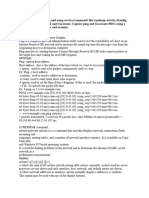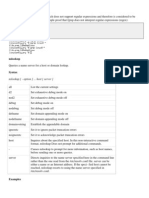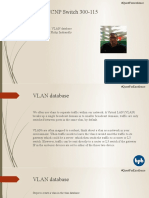0% found this document useful (0 votes)
79 views15 pagesCSE1004 Networks and Communication: 1) Ifconfig
The document discusses various networking commands including ifconfig, ping, traceroute, netstat, nslookup, dig, arp, and host. For each command, it provides screenshots and explanations of the main options. The options covered include interface configuration, packet parameters, routing details, connection listings, DNS lookups, and protocol specifications. The document serves as a reference for understanding the functionality and usage of important Linux networking utilities.
Uploaded by
Rahul SaiCopyright
© © All Rights Reserved
We take content rights seriously. If you suspect this is your content, claim it here.
Available Formats
Download as PDF, TXT or read online on Scribd
0% found this document useful (0 votes)
79 views15 pagesCSE1004 Networks and Communication: 1) Ifconfig
The document discusses various networking commands including ifconfig, ping, traceroute, netstat, nslookup, dig, arp, and host. For each command, it provides screenshots and explanations of the main options. The options covered include interface configuration, packet parameters, routing details, connection listings, DNS lookups, and protocol specifications. The document serves as a reference for understanding the functionality and usage of important Linux networking utilities.
Uploaded by
Rahul SaiCopyright
© © All Rights Reserved
We take content rights seriously. If you suspect this is your content, claim it here.
Available Formats
Download as PDF, TXT or read online on Scribd
/ 15























































































